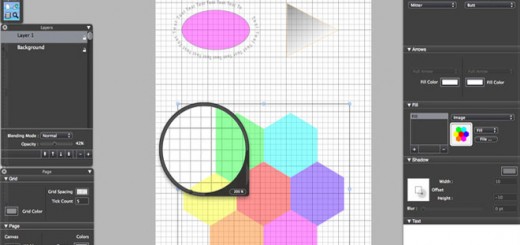The Tale of Two Technologies: Flash and HTML5
3It seems like 2011 had a major impact on the world. This year has touched the technology industry as well with Adobe’s recent announcement to kill Flash Player on mobile devices.

As a Flash lover and developer, the news was shocking, especially when I heard the rumors and the media hitting headlines. But wait a minute, have not we faced many similar news before? Do you remember Adobe acquiring Macromedia and what we thought about this big trend in the market.
Before going deeper in my ideas and thoughts about the news and how it will affect us as designers and developers, let us go through Mike Chamber’s post, in which he tried to explain in full detail why Adobe decided to stop developing the mobile browser version of Flash Player.
So, what is going on? And how will this affect our career as Flash designers and developers? First things first, you do not have to panic, this is the rule of technology, many trends are going on and these may or may not affect us. But the important thing is that we should go with the flow and understand the upcoming trends and how we can use them to empower our career and help us provide better solutions for our customers.
In this article, I will try to explain my point of view about the recent updates and I hope you can share your thoughts and ideas with me to make this article richer and more helpful for designers and developers who would like to find the answers for their questions about the recent update.
What is going on?
There were problems with developing Flash Player on mobile devices and tablets. These problems started to surface when Apple decided to block Flash content on their iPhone, iPad and iPod devices. The two main reasons were that the Flash Player was consuming device battery and CPU usage as well as its buggy behavior.
This is true and it seems like Adobe did not reach a solution for this issues. So deciding not to continue developing Flash Player for mobile devices was a respectable and frank decision to make.
For years, Flash was the major player for rich media and interactive content on the web, desktop and mobile devices. Although there were issues with the behavior of the Flash Player on mobile devices, it was the best and only solution at this time.
Now HTML5 is hitting the market with the heavy hand of change although it is in its early stages. The technology market is looking at HTML5 as a solution that can provide a better behavior than Flash used to.
Thus, Adobe is changing its focus from developing the Flash Player for mobile to HTML5, which we could already see in the last couple of months by the production of Adobe Edge and Adobe Wallaby that is used for converting SWF into HTML5.
Will Flash die?
The answer is simply: no. Many developers still think of Flash as a web tool to create interactive content. It is the definition of Flash that we used to hear when we read the Action Script 1 book. Let me correct this. Through the last decade, Flash has developed to extend its old rule as a web tool. Action Script 3 allows you to create OOP programming language and Flash itself goes beyond the web. Flash becomes a main tool to create cartoon animations, interactive elearning courses, DVDs, videos and more.
Besides this, Adobe AIR, which is a native ActionScript application, allows you to create Flash interactive content on desktops and mobile devices with a large support for mobile vendors including Apple, RIM and Google.
Adobe Flash Builder or Flex is another Flash application that is used for creating web and desktop interactive applications and solutions and Adobe is still developing it with full power.
So, the conclusion is that Flash is not dead; it has lost part of the market we must admit and will see in the next question.
How will this affect my career and the market?
I do not want to go into issues that have been discussed on many websites and you can read full details about it in Mike Chamber’s article. Our main concern here is us, designers and developers, who used to work with Flash every day for years and many of us are relying on it as the main tool in project developing. How will the market be affected by these new changes and how should we react to them?
The problem here goes beyond the developing of Flash Player on mobile and mobile browsers. This change will definitely affect the web usage of Flash. Currently, many of the web users are using their mobiles and tablets to browse the web, which will drive many business owners to avoid using Flash in their websites. Otherwise, they will need to have two versions of the website, one for desktop browsing and another one for mobile browsing. The second version will be HTML5 for sure.
So let us face it, this change will make many of our future customers choose HTML5 rather than Flash in developing websites, providing streaming videos and similar technologies.
Meanwhile, Flash will be the main interest on other side of the market, such as in cartoon animation, DVDs, Adobe AIR applications and Flash Builder solutions. So we are seeing a reform on the market of Flash. The future of Flash will take a niche on the market which is represented by the heavy use of rich media and animation.
HTML5 will take the lighter niche that uses animation and interaction for web and mobile devices. It can extend in the future, but in the meantime we will see that Flash is moving forward on the other side of the market to provide 3D support in the Flash Player, other heavy animations and AIR application development.
So we can say that the market that was only focusing on Flash is now divided between Flash and HTML5. This leads us to the next question: How will this change affect me and how can I deal with it?
How will this affect Flash designers and developer?
Simply, it means that you will be back to school again. Developing yourself and your skills has always been an important part of your life and career and it is time to do it again. You do not need to leave your heavy experience in Flash behind, but you will need to add another skill to it, which is HTML5.
It is clear that designers and developers rely on many tools in their workflow, and HTML5 will be another tool that you should learn and understand, not only to get jobs and secure your career, but also to be able to provide the best solutions for your customers.
Learning about both technologies will help you get more exposure and gain clients from both sides of the industry. Also, you will be a pioneer in your career by providing HTML5 and Flash Solutions to your customers.
Based on the fact that Adobe and similar companies will put more effort and resources in HTML5 developing, you can use your HTML5 knowledge to build better applications that will meet your customer needs.
Conclusion
The recent updates do not mean the death of Flash as many rumors say. Both Flash and HTML5 will have a niche in the market. While HTML5 will take the lead on the web and mobile rich media, Flash will still develop heavy interactive content, cartoon animations, Adobe AIR for desktops and mobile devices.
After years of working in the field of technology, you will understand that there are many trends that can affect your business and career. The recent Adobe updates have a major impact on our careers and projects. But on the other side, it can be viewed as a good chance for us to provide a better experience for our customers.
Finally, your opinions and ideas will add more value to this article and I hope you can share them with me and other readers.





Great article. I think this what alot of flash developers needed to hear.
-Anthony
“Otherwise, they will need to have two versions of the website…”
LOL. Wasn’t this what we were doing ten years ago?
One site for those with the Flash Player installed and an HTML alternative for the others.
I find that flash could pretty much do everything, the only issue was loading spped, compatability, etc. I just think it will come back in a more compatible format. The movie quality of flash was in itself very unique.